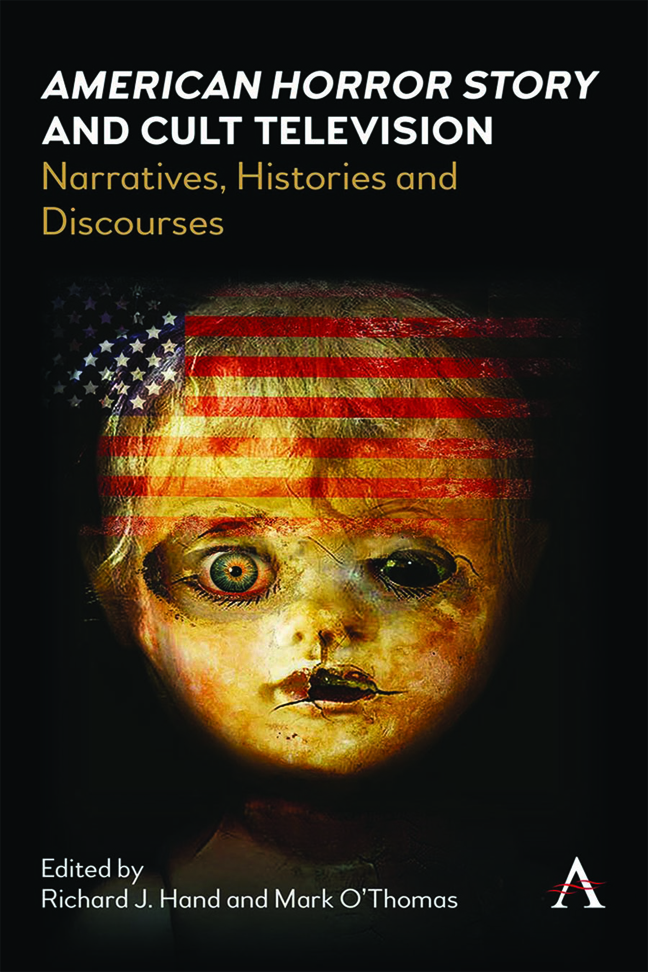Chapter 8 - (Un)Dead Together: Hospitality, Hauntology and the ‘Happily Ever After’ in American Horror Story
Published online by Cambridge University Press: 01 March 2024
Summary
Death is a staple of AHS, as are themes of mortality, loss and mourning. Death is so much present in the series that Keetley (2013, 90), examining the first season, writes that it ‘incarnates the death drive’. She argues that for this reason it is one of ‘the most unrelentingly pessimistic cultural texts of the contemporary moment’ (Keetley 2013, 90). Yet at times, a more hopeful reading might also be made of this remarkably popular show. As character Mallory informs audiences (season eight, Ep. 8, 00.35.45), ‘nothing ever truly dies’. This is certainly the case in the imagined world of AHS, where death almost never equates with absence and the dead return in myriad forms. In this chapter, the first season, ‘Murder House’ (2011), and fifth season, ‘Hotel’ (2015), are examined in terms of their treatment of the (un)dead, exploring the ways in which the series can be understood to negotiate the complexities of what it would mean to extend hospitality ‘without reserve’ (Derrida 2005, 6), to choose to live with the (un)dead, and to join them. In particular for mothers who have suffered the traumatic loss of their children in life, AHS blurs the dystopian and the romantic by offering an eternity of mother/child bonding. ‘Murder House’ and ‘Hotel’ both imagine lives where instead of giving up your dead, you get to die (and live) alongside them.
What Does (Un)dead Mean in AHS?
The term (un)dead is adopted here for three reasons. First, because the vast array of (un)dead characters across the existing seasons of AHS calls for a term that is broad and can encapsulate vampires, ghosts, characters reanimated via magic and more. Various projects have sought to delineate the (un)dead in popular culture (Williams and Schafer 2013; Thompson 2014), but many of the (un)dead in AHS resist categorization. The (un)dead characters in ‘Murder House’ are ghostly because they are bound to a location that calls into mind a haunted house – as character Violet Harmon says when she sees the house (season one, episode one, 9:20): ‘Great, so we’re the Addams family now’. Referencing the Addams family signals both AHS's tendency towards intertextuality and its concern with the playful Gothic, whilst also, by referencing an iconic American nuclear family, the specific concern with this familial construct in ‘Murder House’.
- Type
- Chapter
- Information
- American Horror Story and Cult TelevisionNarratives, Histories and Discourses, pp. 129 - 142Publisher: Anthem PressPrint publication year: 2023

